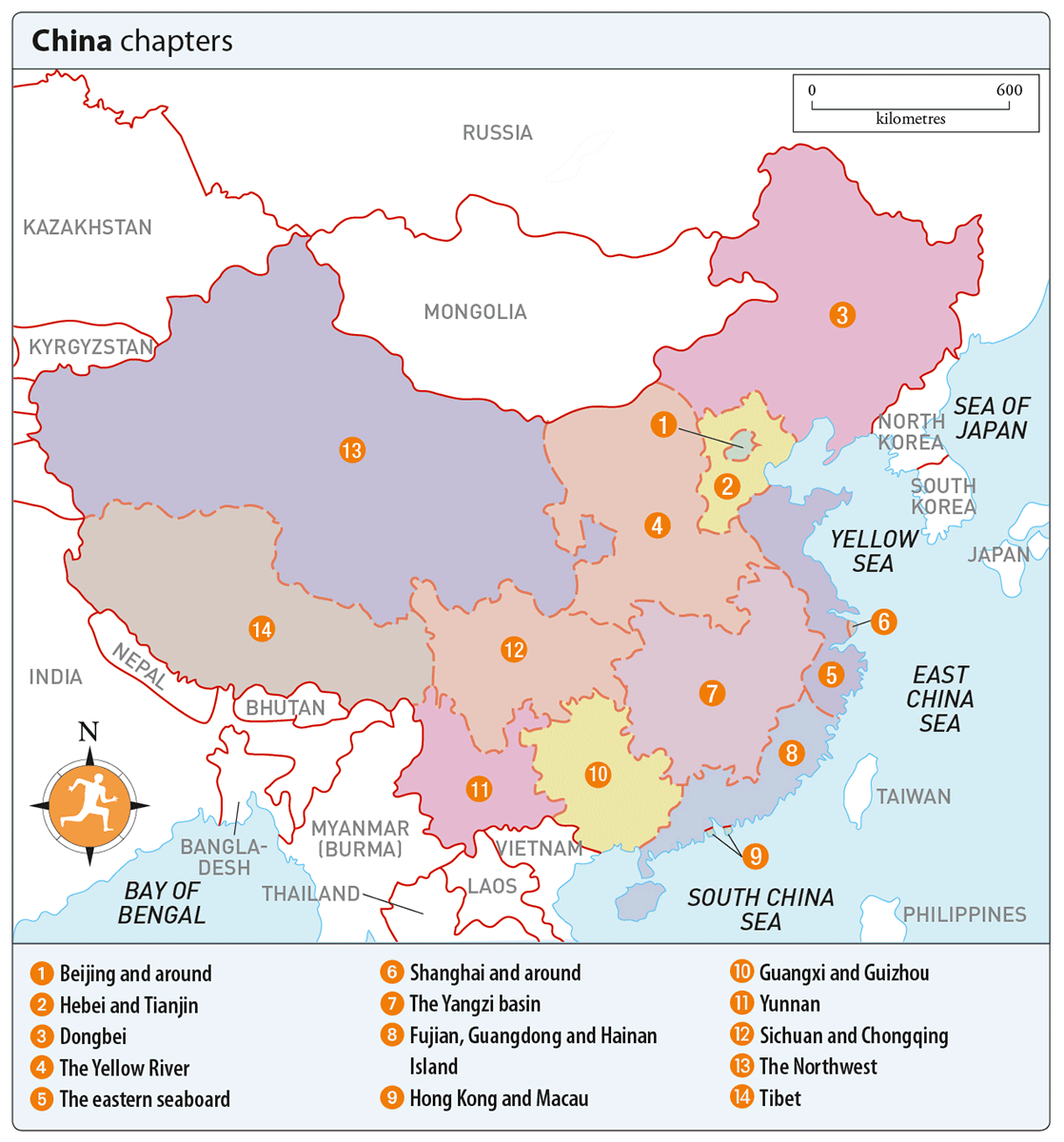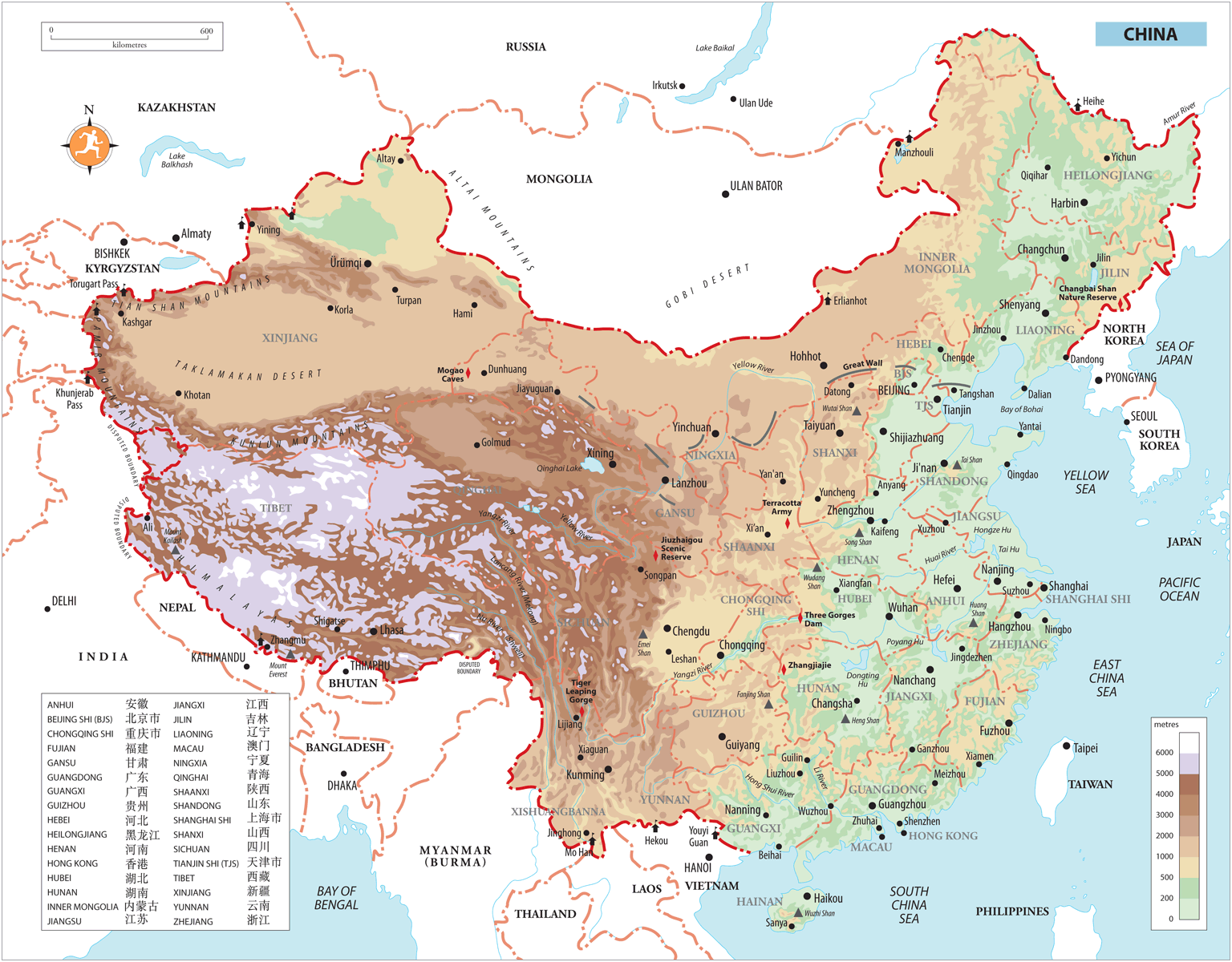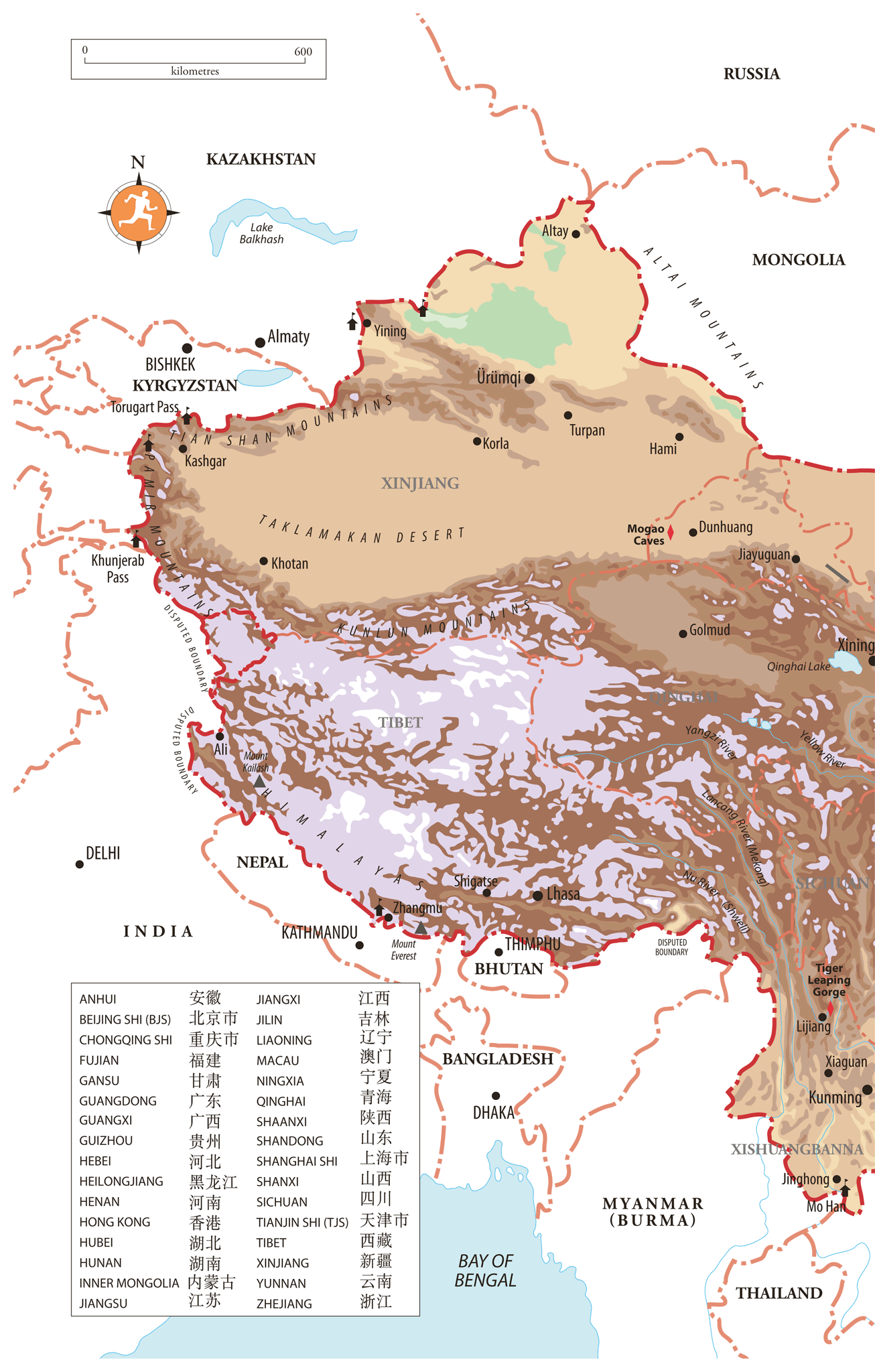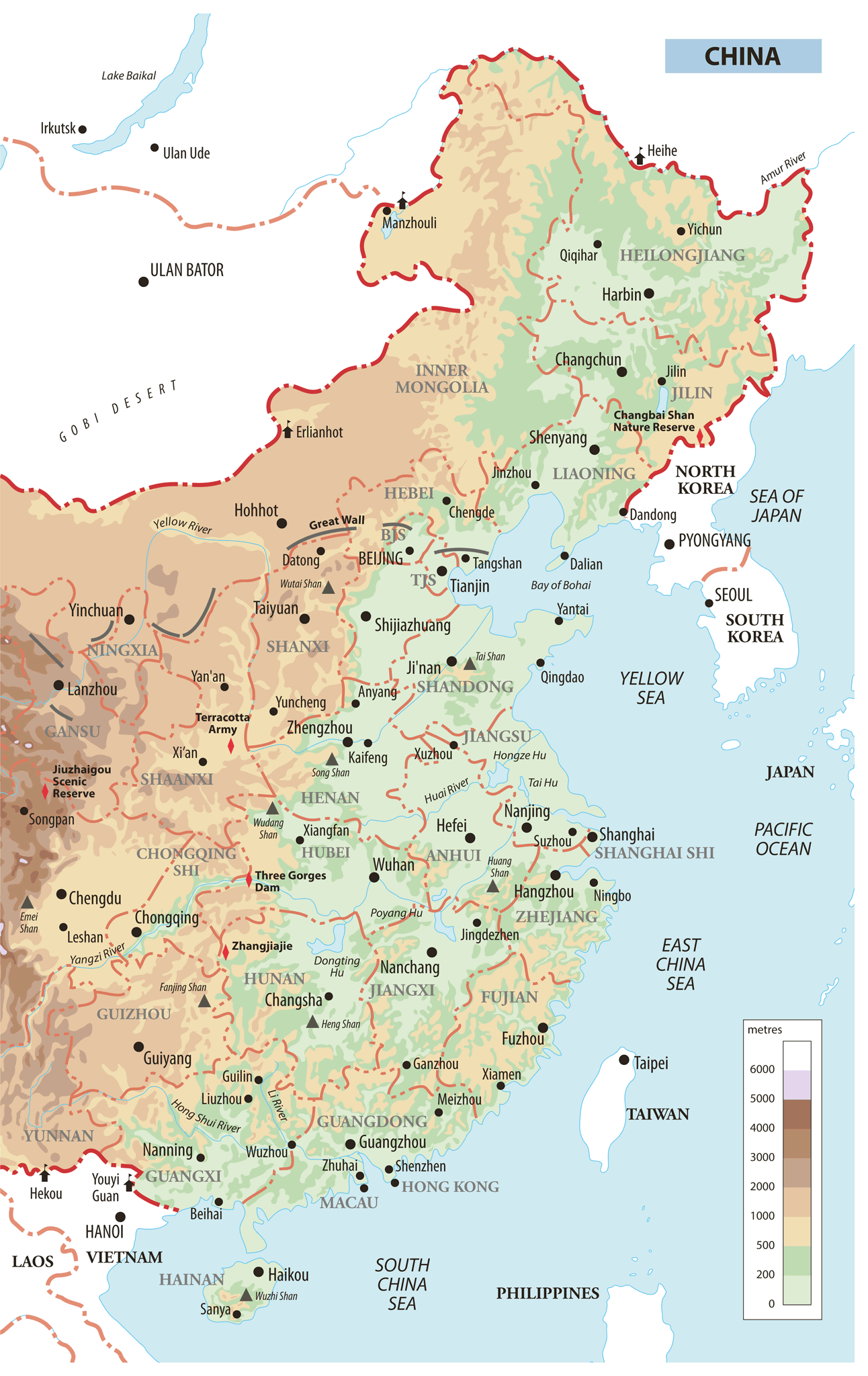INTRODUCTION TO CHINA
China is a nation on the march. As it accelerates away from its preindustrial cocoon at a rate unmatched in human history, huge new cities with cutting-edge architecture continue to spring up, connected by an ever-expanding high-speed rail network. But look closer and youll see Chinas splendidly diverse geographic, ethnic, culinary and social make-up is not lost; modernity conceals a civilization that has remained intact, continually recycling itself, for over four millennia. Chinese script was perfected during the Han dynasty (220 BC220 AD), and the stone lions that stand sentinel outside skyscrapers first appeared as temple guardians over three thousand years ago. Indeed, it is the contrast between change and continuity that make modern China so fascinating.
FACT FILE
- With an area of 9.6 million square kilometres, China is the fourth-largest country in the world and the most populous nation on Earth, with around 1.38 billion people. Of these, 92 percent are of the Han ethnic group, with the remainder comprising 55 officially recognized minorities such as Mongols, Uyghurs and Tibetans.
- The main religions are Buddhism, Taoism, Islam and Christianity, though the country is officially atheist.
- Chinas longest river is the Yangzi (6275km) and the highest peak is Chomolungma Mount Everest (8850m) on the Nepalese border.
- The Chinese Communist Party is the sole political organization, and is divided into Executive, Legislative and Judicial branches. The chief of state (President) and the head of government (Premier) are elected for five-year terms at the National Peoples Congress.
- Though few industries are state owned nowadays, the uncontrolled free-market economy of recent times is being reigned in by the current administration.
The first thing that strikes visitors to this country is the extraordinary density of its population. In much of eastern, central and southern China, villages, towns and cities seem to sprawl endlessly into one another along the grey arteries of busy expressways. Move to the far south or west, however, and the population thins out as it begins to vary; large areas are inhabited not by the Chinese, but by scores of distinct ethnic minorities, ranging from animist hill tribes to urban Muslims. Here, the landscape begins to dominate: green paddy fields and misty hilltops in the southwest, the scorched, epic vistas of the old Silk Road in the northwest, and the magisterial mountains of Tibet.
Although abundant buses, flights and high-speed trains have made getting around China the easiest it has ever been, to get under the skin of this country is still no simple matter. The main tourist highlights the Great Wall, the Forbidden City, the Terracotta Army and the Yangzi gorges are relatively few considering the vast size of the country, and much of Chinas historic architecture has been deliberately destroyed in the rush to modernize. Added to this are the frustrations of travelling in a land where few people speak English, the writing system is alien and foreigners are sometimes viewed as exotic objects of intense curiosity though overall youll find that Chinese people, despite a reputation for curtness, are generally hospitable and friendly.

FROM TOP GIANT PANDAS, SICHUAN; HONG KONG BY NIGHT
Where to go
As China has opened up in recent years, so the emphasis on tourism has changed. Many well-known cities and sights have become so developed that their charm has vanished, while in remoter regions particularly Tibet, Yunnan and the Northwest previously restricted or undiscovered places have become newly accessible. The following outline is a selection of both classic China sights and less-known attractions, which should come in handy when planning a schedule.
Inevitably, Beijing is on everyones itinerary, and the Great Wall and the splendour of the Forbidden City are certainly not to be missed; the capital also offers some of the countrys best food and nightlife. Chengde , too, just north of Beijing, has some stunning imperial buildings, constructed by emperors when this was their favoured retreat for the summer.
South of the capital, the Yellow River valley is the cradle of Chinese civilization, where remnants of the dynastic age lie scattered in a unique landscape of loess terraces. The cave temples at Datong and Luoyang are magnificent, with huge Buddhist sculptures staring out impassively across their now industrialized settings. Of the historic capitals, Xian is the most obvious destination, where the celebrated Terracotta Army still stands guard over the tomb of Emperor Qin Shi Huang. Other ancient towns include sleepy Kaifeng in Henan, and Qufu , the birthplace of Confucius, in Shandong, both offering architectural treasures and an intimate, human scale thats hard to find in the large cities. The area is also well supplied with holy mountains , providing both beautiful scenery and a rare continuity with the past: Tai Shan is perhaps the grandest and most imperial of the countrys pilgrimage sites; Song Shan in Henan sees followers of the contemporary kung fu craze making the trek to the Shaolin Temple, where the art originated; and Wutai Shan in Shanxi features some of the best-preserved religious sites in the country.

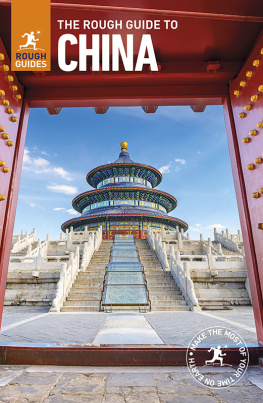


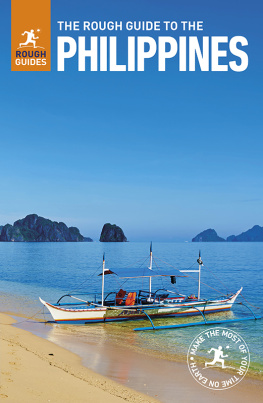
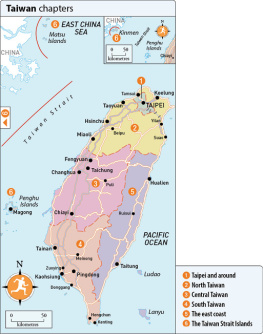
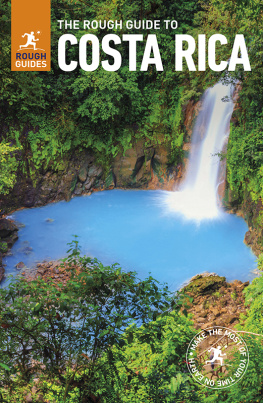




![Martin Zatko - The Rough guide to Beijing [2014]](/uploads/posts/book/218133/thumbs/martin-zatko-the-rough-guide-to-beijing-2014.jpg)
![David Leffman - The Rough guide to China [2014]](/uploads/posts/book/197581/thumbs/david-leffman-the-rough-guide-to-china-2014.jpg)


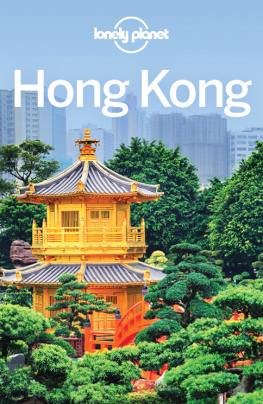

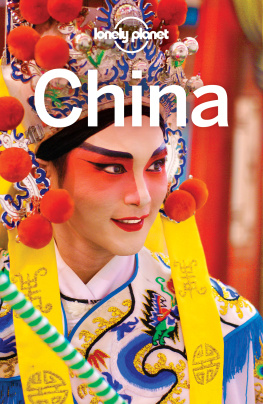
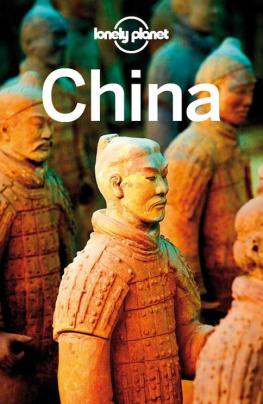
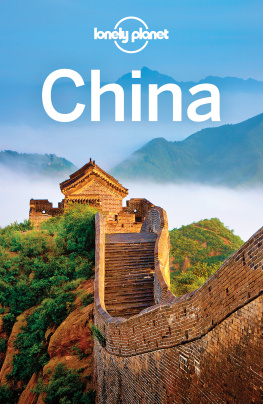

 . You can select your own favourites and create a personalized itinerary by bookmarking the sights, venues and activities that are of interest, giving you the quickest possible access to everything youll need for your time away.
. You can select your own favourites and create a personalized itinerary by bookmarking the sights, venues and activities that are of interest, giving you the quickest possible access to everything youll need for your time away.